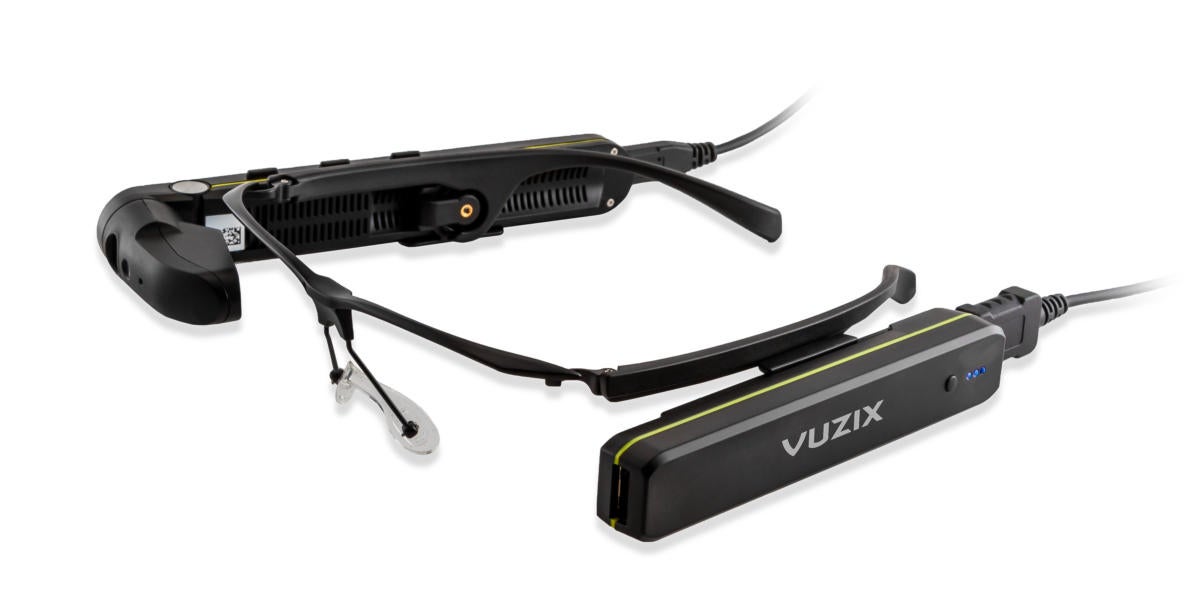LONDON – The benefits of getting digital tools into the hands of frontline workers are becoming clear to more companies – and they’re spending more money to help those workers be successful. Whether they be in manufacturing, logistics, maintenance, healthcare or hospitality, non-office based workers play a significant role in an organization’s success because they are often the first point of contact with customers or products.
In addition to relying on smartphones and tablets for certain job roles – particularly those that require hands-free computing – there is growing demand for wearables such as smartwatches and augmented (or virtual) reality headsets.
There are now 24 million frontline workers in the U.S. according to The Upskill Initiative. And Gartner predicts that up to 70% of mobile and endpoint net new investments will be aimed at those workers over the next five years. Furthermore, the analyst firm expects that 30% of total mobile and endpoint budgets next year will be dedicated to frontline worker needs, up from 10% currently.
Spending on hardware for frontline workers is one of the fastest-growing areas in enterprise IT, said Rob Smith, a senior director analyst at Gartner who focuses on mobile and client computing.
It’s one of the few examples of a ‘greenfield’ spending area for digital tools; the increased investment in hardware “is something that we haven't seen since 2008 with mobile devices,” said Smith.
He spoke at At Gartner’s Digital Workplace Summit in London earlier this month. “It’s an area of IT that is actually growing; most of IT is flat.”
While benefits include enhanced productivity, error reduction, and even a morale boost for staffers often overlooked when it comes to new hardware, deploying the technology can be fraught with difficulties.
Smith offered several tips for successfully deploying frontline worker devices.
Involve workers in tech choices from the get-go
The key advice for organizations rolling out hardware to frontline staff is to include them in plans as early as possible. This will help identify potential problems that could slow adoption and increase the likelihood workers actually use the tech.
“Employee acceptance is by far the biggest challenge,” said Smith. “Forget the reliability of hardware, forget availability, forget anything else, if the employees say ‘No,’ you are never going to get it out the door. So involve them from the beginning.”
To have the best shot at success, IT needs to engage directly with users.
“This is a weird concept for IT because we don't like to talk to anybody: 'I have five jobs, the last thing I want to do is talk to HR, legal, let alone talk to some frontline worker about how they do their job.' Well, you have to involve them. If you don’t…, it is not going to get deployed and no one is going to accept it and it won’t get used.”
Smith cited the rollout of head-mounted displays to miners at an oil and gas company that he did not identify. The devices, which were attached to miners’ headgear to provide visual directions of where to dig, were quickly rejected by older employees; they chose to rely on their decades of experience rather than new technology they felt had been foisted on them by IT.
“Pretty much every helmet they delivered came back broken,” said Smith. “‘Oh sorry, it didn't work.’ ‘We dropped it. ‘It got run over by the lorry.’ These things happened. Needless to say, they are not being used at the moment and all that work for this super high-end engineering device and however many they bought, [became effectively] useless.”
That example contrasts with Volkswagen, which consulted with worker union representatives before rolling out Vuzix M300 smart glasses to staff on factory productions lines. The aim of the project was to improve productivity and reduce car part defects.
 Vuzix
Vuzix
Vuzix M300
Efforts were made to ensure that workers – some of whom had worked on the line for decades – could decide whether or not they wanted to use the smart glasses. “In the case of Volkswagen, what they did was you had the choice: you could embrace the new tech, or they would train you or move you to another line. But they couldn't replace you because you refused to use the new tech,” said Smith. “That was key.”
Consider data regulations for smart devices
Another issue involves managing the personal data that can be generated by wearable devices. The arrival of GDPR in 2018 tightened data privacy rules for companies with operations in Europe, and has also set a benchmark of how employee data should be handled more widely. This has implications for employees using wearable devices and means that security and compliance staff should be consulted early on, said Smith.
“All smartwatches today, pretty much, include heart monitoring,” he said. “Well, heart monitoring is personal data which falls very much under GDPR. Step counts also fall under GDPR.”
Smith cited a UK-based rail organization that intended to supply station conductors with smartwatches to help them track train arrivals and departures. Based on compliance recommendations, the organization decided to procure a custom-made smartwatch, manufactured without any health sensors to track personal data, rather than deploying something off-the-shelf.
“That was their only possible solution. Nobody liked that answer, but that was the only answer,” he said. “So you have got to think about what are the implications of this tech.”
Be prepared for vendors to end device support
Investing in emerging hardware categories carries a certain degree of risk.
Smith talked about how The 02 Arena – a 20,000 capacity venue in the center of London – invested in Samsung Galaxy smartwatches to direct maintenance staff to toilets that require cleaning during an event.
“Three months after they launched this project, Samsung discontinued this watch with no notice,” said Smith. “None. So they went on Ebay, they went to every source they could find and they bought every one of them they could find because there was no other choice. And, while they did, they redesigned every single application to make it work with a new watch face.”
In many cases, vendors offering nascent technology such as smart glasses are relatively small, meaning there is always a risk that they may not be around for long. If they go out of business, then any guarantees of support are gone. One way to mitigate against that issue is to rely on common platforms where possible.
“So who else makes similar devices we could use to replace them? The more common you can make solutions and less niche, the better your deployment is going to go,” said Smith.
Why bother with new frontline hardware? ‘Insane’ benefits
With a variety of other complex tech challenges facing companies, rolling out wearables or other new devices to workers may seem to be a bridge too far. But, when done successfully, there are clear advantages for business.
“So why do it?” said Smith. “Well, it's insane, the benefits.”
DHL Supply Chain, a logistics business within German Post, for example, saw a 15% performance improvement after it equipped warehouse workers with smart glasses that provide visual instructions of where items are located. Onboarding and training times were also halved. (The company has continued to invest after a pilot project and recently rolled out Google’s second-generation Glass Enterprise Edition smart glasses more widely across DHL operations in Europe and the U.S.)
Smith also highlighted an experiment conducted by Boeing, where three groups of trainees were tasked with carrying out an assembly process. One group was given a traditional manual, the second a tablet and the third an AR display.
The first group made around eight errors, on average, the first time they performed a task. During later attempts the error rate was cut to four. Those who used a tablet to follow instructions, made on average of three to four errors the first time – and two errors afterward.
“The people who they gave head-mounted displays, the very first time – no errors,” said Smith. “You certainly don't want a wiring issue in an airplane engine, and if you can go from four errors consistently to no errors, well you can't put a price tag on that, you really can’t.”
Join the CIO Australia group on LinkedIn. The group is open to CIOs, IT Directors, COOs, CTOs and senior IT managers.
